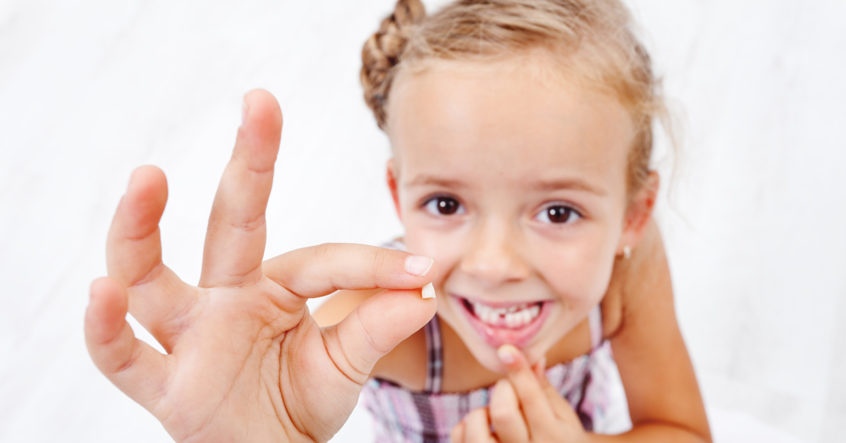Parents often look forward to their children’s milestones with excitement, but there is one milestone that is more bittersweet than others. Losing baby teeth can be exciting (yay tooth fairy!), but it can also be confusing for the parents and scary for anxious children. Learning about the process of losing baby teeth can help you ease your child into this process.
Know the facts
Children lose their primary teeth (baby teeth) when the adult teeth slowly move up through the jaw. The permanent (adult) tooth absorbs the root of the primary tooth, causing it to loosen and eventually fall out. Knowing what to expect allows you to answer questions your child may have:
- When should you expect to see a wiggly tooth? Most dentists agree that children will lose their first baby tooth between the ages of five and seven. However, don’t worry if your child is a little younger or older; it is not uncommon for even a four-year-old to experience a wiggly tooth.
- Which teeth fall out first? The two front bottom teeth are usually the first to be lost. Following those two are the central incisors (top front teeth).
- Will it hurt? When the tooth is ready, it should be relatively painless. However, eating hard food such as apples may become uncomfortable in the meantime. Slice hard foods like apples into thin bites if necessary. Alternatively, over-the-counter gels such as Oragel may relieve pain.
- Will it bleed? Blood is more likely to occur if the tooth is yanked roughly prematurely or if it falls out due to an accidental bump to the mouth. If necessary, apply sterile gauze on the gum until the bleeding subsides.
- What if the tooth is swallowed? Swallowing a loose tooth is a common fear of young children, especially if this is his/her first loose tooth. Rest assured that a tooth will pass easily through the body. If your child is concerned about the tooth fairy, have your child leave a handwritten note under the pillow.
A wiggly tooth is confirmed, but now what?
The most important thing to remember when a child has a loose tooth is to let nature take its course. Yanking a tooth can cause pain or bleeding. Any tooth removal method that requires force (tying it with floss, yanking it out by hand) is a no-go as it could introduce the risk of infection to a ruptured root.
Continue to maintain a proper oral hygiene routine, taking special care to brush the gum line thoroughly. As the adult tooth continues to move through the jaw, the primary tooth will continue to loosen on its own. Often, a loose tooth falls out easily during regular brushing.
Oral care after the tooth falls out
Once the primary tooth falls out, it may take a few weeks for the adult tooth to finish coming in. Because these are permanent, adult teeth, be sure to remind your child the importance of a solid oral care routine. Supervision while brushing is needed until around the age of 8. If the new adult teeth are particularly crooked or discolored, consult your child’s dentist.

